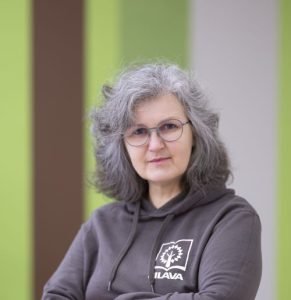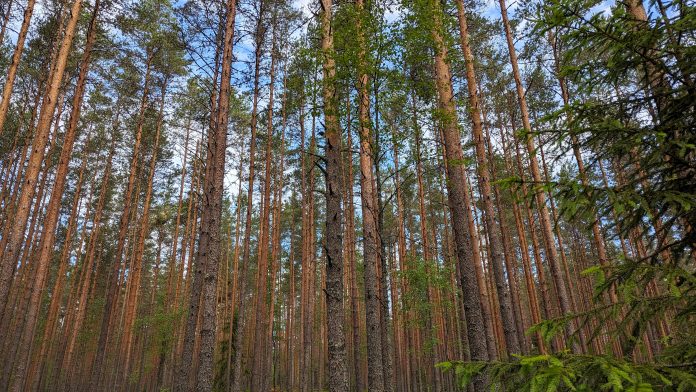Forest soil improvement is relevant in many countries of the world. One of the projects created to achieve this measure is InBestSoil. This is an innovative project funded by the European Union through the Horizon Europe program that revolutionizes the perception of soil health by developing an economic valuation system integrated into business models. InBestSoil aims to provide a framework for investing in soil health. The project emerged from the need to address the degradation of more than half of Europe’s soils, costing an estimated €50 billion annually.
The project brings together nineteen partners from ten countries to achieve a common goal, from universities to small and medium-sized enterprises, consultancies, farmers, and NGOs. InBestSoil will provide data, evidence, tools, and models to assess how investment in soil health can contribute to the transition to a sustainable and long-term resilient use of soil. Nine study areas across four biogeographic regions from Europe (Boreal, Continental, Atlantic, Mediterranean), and different land uses (agriculture, forest, urban, mining), will be used as models for co-creation and co-design. This approach ensures the project’s results are relevant and applicable to various stakeholders and contexts.
One of the experimental sites involved in the project is based in Latvia. There is a Boreal Forestry Soil, and this case study focuses on improving forestry soil through sustainable management practices, monitoring groundwater levels, and studying the impact of the Baltic Sea on coastal forests. It aims to enhance soil quality and overall forest management, as it was previously used as a mining zone.
Latvian State Forestry Institute “Silava” is one of the partners involved in the technical experimental site. In the context of this unique international pilot project, we offer you an interview with Dagnija Lazdiņa – Senior researcher at Latvia State Forest Research Institute “Silava”.

First, please tell us briefly what InBestSoil does and how “Silava” came to work with this organisation.
The leading partner invited Silava to join the consortium. Our role in the project is to cover boreal forest soil health, management, and other issues. We have excellent cooperation with the Forest research station “Meža pētīšanas stacija,” which has a long history of scientific research demo sites and long-term experiments in Latvia. By the Horizon Europe definitions, a long-term experiment is considered a case study that fits most living lab criteria.
One of the InBestSoil experimental sites involved in the project is based in Latvia. There is a Boreal Forestry Soil. This case study focuses on improving forestry soil through sustainable management practices, monitoring groundwater levels, and studying the impact of the Baltic Sea on coastal forests. Please tell us more about this project: what its purpose is, what InBestSoil will do, and what Silava will do, i.e., what the responsibilities of each party are in this project.
LSFRI Silava and the Forest Research Station have established multiple forest sites to showcase standard practices in forest regeneration within mineral and organic soils. The Mežole research district is situated in a landscape with steep slopes and various soil types such as clay, gravel, sand, and peat, which change within short distances due to the micro-relief.
How would you rate the overall quality of forest soil in Latvia? What are the dynamics? For example, can you compare it with ten or twenty years ago?
In the last few years, the acidity of forest soils has increased, and nutrient elements have been accumulated in litter. Eutrophication is not a problem, but it is part of the natural succession process in a healthy ecosystem, where organic matter accumulates due to photosynthesis and changes in vegetation. As trees and shrubs grow, natural competition occurs—weaker ones. Also, part of the vegetation decays and turns into humus. The acidity of the humus depends on the dominant tree species in the forest stand.
As the forest matures and the total biomass of the stand increases, it puts pressure on the soil, leading to natural soil compaction, especially on clayey mineral soils. However, over the past twenty years, soil health has improved due to more forest areas being certified under sustainable forest management schemes like PEFC and FSC. Forest machinery now uses caterpillars or double wheels to minimise deep rut formation, and after harvesting, efforts are made to fix the soil by removing ruts. Soil scarification methods have been used to improve the ingrown of the planted trees, reduce competition with weeds, enrich the soil with oxygen, and regulate water availability. By choosing direct planting spot preparation technologies, it is possible to mitigate scarified areas, such as mounding or inversion, which has also been employed.
What is the impact of forest soil quality on the forest industry as a whole? To what extent can adequate soil contribute to the sector’s growth, including better sales figures for forest farms?
Forest soils as a subject may not be prevalent, but soil health is improving due to implementing sustainable forestry criteria for the growth of forest stands. Forest owners are taking a long-term approach and understanding that healthy soil leads to a healthy and productive forest. Nutrients are removed from the forest, but we consider using wood ash as a source of micronutrients and liming agents after the first commercial thinning. There are soil preparation methods in place to reduce the risk of leaching. Additionally, there are guidelines for environmentally friendly and sustainable operating in forests.
How long will the experimental collaboration last, what results do you plan to obtain, and how do you intend to use them further?
We have been working on the InBestSoil project for more than one year. We aim to highlight safer and economically sound forest management practices and business models. Moreover, we are in the process of establishing a soil practice and a management network of case studies that aim to become lighthouses.

